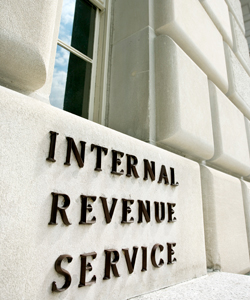

By Wendy Richards and Sven Skillrud, Godfrey & Kahn, S.C.
Jan. 18, 2012 – Under a new Voluntary Classification Settlement Program, the Internal Revenue Service permits employers to reclassify independent contractors as employees with minimal costs.1 Misclassified workers have recently come under fire from government agencies. For example, in a Sept. 19, 2011, press release, the IRS and Department of Labor announced coordinated and targeted enforcement efforts against misclassified workers. Similarly, the IRS previously indicated it will focus on worker classification with regard to its employment tax audit initiative announced in February 2010.2
During a Jan. 5, 2012, phone conference with payroll industry representatives, the IRS indicated that the 217 applications received so far for the Voluntary Program is in line with expectations.
Voluntary Classification Settlement Program
Under this program, an employer prospectively reclassifies workers as employees and pays a limited employment tax liability for past treatment as independent contractors. If accepted into the program, which is at the discretion of the IRS, the employer enters into a closing agreement. The closing agreement will extend the statute of limitations on the assessment of employment taxes for three years for the first, second, and third calendar years beginning after the date the employer agrees to classify workers as employees. The employer is protected against prior assessments for the reclassified workers.
To be eligible for the Voluntary Program, the following apply:
Reclassify prospectively. The employer should currently treat workers (or a class or group of workers) as independent contractors and be willing to treat workers as employees prospectively.
Prior Forms 1099. The employer should have filed all Forms 1099 for the past three years for all reclassified workers. The Forms 1099 must have been filed no more than six months after the applicable due date (including extensions).
Audit limitations. The employer must not be under audit by the IRS or by the Department of Labor or a state government agency regarding the classification of the workers. If the IRS or the Department of Labor previously audited the employer, the employer will become eligible for this program when the employer complies with the results of that audit. An employer is not considered under audit if the IRS has contacted the employer for more information because a worker claimed misclassification (via Form SS-8).

What are the benefits?
This voluntary program has several benefits, including:
No “reasonable basis” threshold. The employer does not have to show a “reasonable basis” for previously classifying workers as independent contractors, which is different from the requirements of Section 530 of the Revenue Act of 1978.3
Reduced costs. The employer pays the IRS an amount equal to 10 percent of the employment taxes for the reclassified workers that would have been due for the most recent tax year. Generally, this equates to about 1 percent of the prior tax year’s compensation for the reclassified workers. Except for this payment, no other interest or penalties apply.
Protection for past classification. The employer will not be subject to an employment tax audit with respect to reclassified workers for all prior years, which means the employer will not be liable for taxes and penalties for misclassified workers for prior years. Keep in mind, however, that the statute of limitations will be extended for three years, as described above, and the employer must continue classifying the workers as employees.
The recently issued IRS Frequently Asked Questions for the voluntary program provides the following additional information and clarifications4:
Reclassify workers as appropriate. Not all independent contractors must be reclassified, but once a certain class of workers is reclassified as employees, all workers in that same class must be treated as employees.
No payment due with the application. Applications for the Voluntary Program should be submitted without payment. But, employers should be prepared to submit applicable payments if accepted into the program.
No information sharing. The IRS FAQs currently states that information about program applicants will not be shared with the Department of Labor or state agencies, which alleviates the concern that applications could be used as a roadmap for government agencies to pursue future enforcement actions. However, it is still not clear whether other agencies could discover that an applicant participated, or attempted to participate, in this program through other means, including during an audit.
No admission of wrongdoing. The IRS assures taxpayers that participation in the Voluntary Program is not an admission of prior wrongdoing; accordingly, a program participant is not admitting to a misclassification for prior tax years.
Audits. The IRS assures applicants that a rejected application will not automatically trigger a federal tax audit; however, an applicant could be audited for other reasons.
What is the application process, and what are the deadlines?
An employer can apply to the program by submitting a completed Form 8952 at least 60 days before the planned effective date for the reclassification. Otherwise, there currently is no deadline to participate in this program.
Are there additional considerations before applying?
An employer should consider the following before applying to the program:
Employee benefit plans. This program only addresses employment taxes and does not address the impact on employee benefit plans. An employer must consider the impact a worker reclassification would have on all outstanding employee benefit plans. Consult an employee benefits counsel prior to submitting an application because worker reclassification could have drastic consequences on a variety of employee benefit plans.
IRS discretion. Acceptance into the Voluntary Program is at the discretion of the IRS.
Appropriate worker classification. Properly classifying workers as employees or independent contractors can sometimes be difficult and subject to reasonable dispute. The Voluntary Program could be an expensive and unnecessary step for an employer that has appropriately classified workers as independent contractors.
About the authors
Wendy Richards, U.W. 2008, and Sven Skillrud, Marquette 2005 cum laude, are associates with Godfrey & Kahn's Tax & Employee Benefits practice group. Richards works with all of the firm’s offices statewide, and Skillrud primarily works in the firm’s Milwaukee office.
Endnotes
